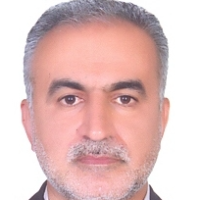Geometric indices and regeneration species diversity in natural and man-made canopy gaps
Canopy gaps are the most important environments for many species regenerations. Studying regeneration in natural and Man-made canopy gaps provides practical information to enhance the quantity and quality of tree species regeneration. This study aimed to investigate the relation between geometrical characteristics of canopy gaps with diversity and density of tree species regeneration in natural and Man-made canopy gaps.
Two 16 ha plots were selected with relatively similar site conditions in part of series one and two of Dr. Bahram-nia 's forestry plan, Shastkalateh, Gorgan. The position of 56 canopy gaps was recorded using a differential positioning system (DGPS). The main indices of the gap’s geometry including area (A), perimeter (P), and perimeter to area ratio (P/A) were measured and then the circular index (C) and the Gap shape complexity Index (GSCI) were calculated. Also, the frequency and diversity of tree species regeneration were recorded within 25 m2 plots centered on each gap. Gaps were classified into three small (20-150 m2), medium (150-300 m2), and large (more than 300 m2) area classes, and indices of species diversity were calculated for each gap using PAST software environment. Statistical analysis was performed to determine the significance of differences and relationships between geometric indices and diversity of regenerative species.
The average area of natural and Man-made canopy gaps were 206 and 176 m2, respectively. The mean circular index of Man-made canopy gaps (C = 0.72) was higher than natural ones (C = 0.66); although, their difference was not significant. Increasing the area, the shape of the natural gaps shifted away from the circular, elongated, and the complexity of their shape increased. The shape complexity index of Man-made gaps did not show a significant difference with increasing the area. Perimeter to area ratio of large gaps was smaller than other classes in both types of gaps. Regeneration density of Velvet maple and Ironwood species were significantly higher in medium Man-made gaps than other species, other classes, and natural mediums gaps. As a result, richness, total individual regeneration, diversity, dominance, and evenness in the medium gaps (300-150 m2) showed the maximum value and significantly different from the large gaps (greater than 300 m2). In natural gaps, with increasing area regeneration density of Velvet maple and Date-plum species, species richness, total individual regeneration, and species diversity of regeneration decreased significantly. A positive correlation was observed between the gap’s P/A with the regeneration density of maple and hornbeam species in natural gaps (r = 0.480 and r = 0.356, respectively). The richness index had a negative correlation with the perimeter (r = -0.337) and with area of natural gaps (r = -0.103). In Man-made gaps, the evenness index showed an inverse correlation and the species richness showed a direct correlation with P / A (r = -0.553 and r = 0.578, respectively).
Man-made gaps were more regular and rounder than natural gaps. As the shape of the Man-made gaps shifts away from the circle form, it was elongated and increased in fractures and complexities, and also the density of maple’s regeneration increased. Medium-sized Man-made gaps (150-300 m2) showed the highest value of richness, diversity, and regeneration density compared to other categories of gap area. Therefore, this range of gap size could be considered as the optimum range.
-
The Effects of Changes in the Forest Structure’s Quantitative Traits on the Leaf Area Index in Hyrcanian Forests, Golestan Province
Seyedeh Zahra Seyed Mousavi*, Jahangir Mohamadi, Roshanak Darvishzadeh, Shaban Shtaee Jouibary, Ramin Rahmani, Khalil Ghorbani
Ecology of Iranian Forests, -
The effect of physiographic factors on the leaf area index in broadleaf forests of Golestan province
Seyedeh Zahra Seyed Mousavi *, Jahangir Mohammadi, Roshanak Darvishzadeh, Shaban Shataee, Ramin Rahmani, Khalil Gorbani
Wood & Forest Science and Technology, -
Investigating the driving forces affecting on forest land-used change in Golestan province based on the opinion of experts and protection forces
*, Seyed Hossein Amirkhani, Gholamhossein Abdollahzadeh, Mohammadrfeza Shahraki
Journal of Plant Ecosystem Conservation, -
Identification and prioritization of criteria and indicators in the forest landscape restoration (case study: Chehl-Chay watershed, Golestan Province)
Mitra Emami, Marjan Mohammadzadeh *, Seyedhamed Mirkarimi, Shaban Shataee,
Journal of Renewable Natural Resources Research, -
Canopy gap delineation using UAV data in a Hyrcanian forest (Case study: Shastklateh Forest)
Sh Amini *, Sh Shataee Jouibary, M.H. Moayeri, R. Rahmani
Iranian Journal of Forest,




